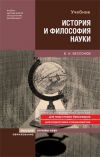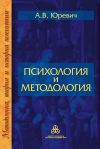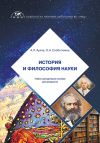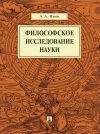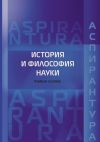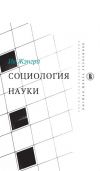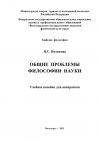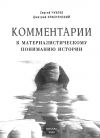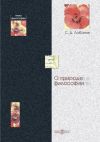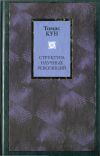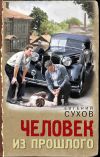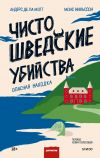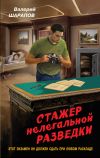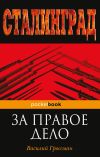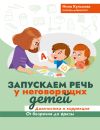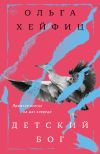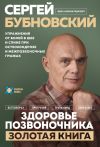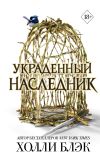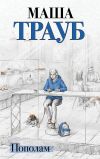Текст книги "После «Структуры научных революций»"
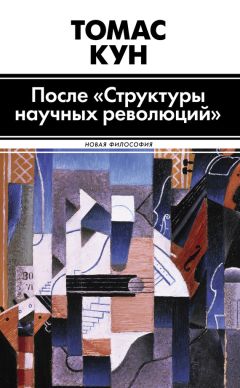
Автор книги: Томас Кун
Жанр: Зарубежная образовательная литература, Наука и Образование
Возрастные ограничения: +16
сообщить о неприемлемом содержимом
Текущая страница: 25 (всего у книги 26 страниц)
К. Г а в р о г л у: Что вы можете сказать о времени, когда были членом Национального научного фонда и оказывали влияние на исследования в области истории и философии науки?
Т. К у н: Да, я был членом различных комитетов и считал работу в Фонде своей профессиональной обязанностью. Но я никогда не пытался играть роль лидера. Порой меня страшно раздражали какие-то вещи, но я был совершенно беспомощен.
А. Б а л т а с: Вы почти ничего не сказали о том, над чем работаете сейчас. Не могли бы вы хотя бы кратко оценить современное состояние данной области?
Т. К у н: Какой именно?
А. Б а л т а с: Я имею в виду историю и философию науки.
Т. К у н: От истории науки я несколько отошел. В последние десять – пятнадцать лет пытаюсь разрабатывать собственную философскую позицию. По истории науки я практически ничего не читаю. После того как написал «Структуру», я почти полностью перестал читать работы по истории науки. Правда, иногда возвращаюсь к истории, но количество литературы здесь чрезвычайно увеличилось. Никто не смог бы уследить за всем, что появляется в печати, я даже не пытаюсь. Иногда встречаю ссылки на работы, которые кажутся интересными, но я их не знаю. Поэтому ничего не могу сказать о состоянии данной области помимо того, что уже сказал. Хотелось, чтобы здесь больше внимания уделяли развитию идей внутри самой науки. Но я боюсь сказать больше.
A. Б а л т а с: А философия науки?
Т. К у н (заговорщицки понизив голос): Все ждут мою книгу!
B. К и н д и: Мы, безусловно, ждем. Есть ли у вас другие интересы, скажем, музыка или живопись?
К. Г а в р о г л у: Увлечения помимо увлеченности философией науки.
Т. К у н: Я люблю читать детективы.
В. К и н д и: О, это очень похоже на Витгенштейна.
Т. К у н: Я очень люблю музыку, может быть, отчасти потому, что у меня был музыкальный отец и очень музыкальный младший брат. Хотя вначале я не очень хорошо к ней относился. Они слушали симфонии в записи на магнитофоне, водили меня на симфонические концерты. Мне это не нравилось, и я испытывал настоящие мучения. Но когда открыл камерную музыку, мои чувства изменились. Я не слушал ее специально, поскольку трудно было усидеть на месте, но она мне нравилась. И нравится до сих пор, хотя мы нечасто ходим на концерты. Мне нравится театр, но в театр я тоже хожу редко. Я люблю читать, но теперь предпочитаю детективные истории. Помню, мои ребятишки подсмеивались надо мной зато, что я способен читать такое. Моя дочь, которая стала ученым, как-то сказала мне: «Это единственное, что я могу читать, и при этом не чувствую, что я работаю!» Именно так! Даже Джехейн, которая презирала детективы, когда выходила за меня замуж, теперь прочитывает их не меньше, чем я. Оказывается, я приношу вред мышлению окружающих!
Публикации Томаса С. Куна
Более ранний вариант библиографии публикаций Томаса С. Куна был подготовлен Полом Хойнайнджин-Хьюн и опубликован в его книге: P. Hoyningen-Huene, Reconstructing Scientific Revolutions: Thomas S. Kuhn’s Philosophy of Science (Chicago: University of Chicago Press, 1993). Стефано Гатти обновил и расширил эту библиографию в изданной им книге: Thomas S. Kuhn: Dogma contro critica (Milano: Rafaello Cortina Editore, 2000). Издатели и издательство приносят им благодарность за разрешение включить эту библиографию в настоящее издание.
Статьи и книги
1945 [Abstract] [on General Education in a Free Society]. Harvard Alumni Bulletin 48, no. 1, 22 September 1945, pp. 23–24.
1945 Subjective View [on General Education in a Free Society]. Harvard Alumni Bulletin 48, no. 1, 22 September 1945, pp. 29–30.
1949 The Cohesive Energy of Monovalent Metals as a Function of Their Atomic Quantum Defects. Ph. D. dissertation, Harvard University, Cambridge, MA.
1950 (with John H. Van Vleck) A Simplified Method of Computing the Cohesive Energies of Monovalent Metals. Physical Review 79: 382–388.
1950 An Application of the W.K.B. Method to the Cohesive Energy of Monovalent Metals. Physical Review 79: 515–519.
1951 A Convenient General Solution of the Confluent Hypergeometric Equation, Analytic and Numerical Development. Quarterly of Applied Mathematics 9: 1—16.
1951 Newton’s «31st Query» and the Degradation of Gold. Isis 42: 296–298.
1952 Robert Boyle and Structural Chemistry in the Seventeenth Century. Isis 43: 12–36.
1952 Reply to Marie Boas: Newton and the Theory of Chemical Solution. Isis 43: 123–124.
1952 The Independence of Density and Pore-Size in Newton’s Theory of Matter. Isis 43: 364–365.
1953 Review of Ballistics in the Seventeenth Century: A Study in the Relations of Science and War with Reference Principally to England, by A. Rupert Hall. Isis 44: 284–285.
1953 Review of The Scientific Work of Rene Descartes (1596–1650), by Joseph F. Scott, and of Descartes and the Modern Mind, by Albert G.A. Balz. Isis 44: 285–287.
1953 Review of The Scientific Adventure: Essays in the History and Philosophy of Science, by Herbert Dingle. Speculum 28: 879–880.
1954 Review of Main Currents of Western Thought: Readings in Western European Intellectual History from the Middle Ages to the Present, edited by Franklin L. Baumer. Isis 45: 100.
1954 Review of Galileo Galilei: Dialogue on the Great World Systems, revised and annotated by Giorgio de Santillana, and of Galileo Galilei, Dialogue Concerning the Two Chief World Systems – Ptolemaic and Copernican, translated by Stillman Drake. Science 119: 546–547.
1955 Carnot’s Version of «Carnot’s Cycle». American Journal of Physics 23: 91–95. 1955 La Mer’s Version of «Carnot’s Cycle». American Journal of Physics 23: 387–389.
1955 Review of New Studies of the Philosophy of Descartes: Descartes as Pioneer and Descartes’ Philosophical Writings, edited by Norman K. Smith, and of The Method of Descartes: A Study of the Regulae, by Leslie J. Beck. Isis 46: 377–380.
1956 History of Science Society. Minutes of Council Meeting of 15 September 1955. Isis 47: 455–457.
1956 History of Science Society. Minutes of Council Meeting of 28 December 1955. Isis 47: 457–459.
1956 Report of Secretary, 1955. Isis 47: 459.
1957 The Copernican Revolution Planetary Astronomy in the Development of Western Thought. Foreword by James B. Conant. Cambridge, MA: Harvard University Press, 1957. (Successive editions, 1959, 1966, and 1985.)
1957 Review of A Documentary History of the Problem of Fall from Kepler to Newton, De Motu Gravium Naturaliter Cadentium in Hypothesi Terrae Motae, by Alexandre Koyr
. Isis 48: 91–93. 1958 The Caloric Theory of Adiabatic Compression. Isis 49: 132–140.
1958 Newton’s Optical Papers. In Isaac Newton’s Papers and Letters On Natural Philosophy, and Related Documents, edited with a general introduction by I. Bernard Cohen. Cambridge, MA: Harvard University Press, pp. 27–45.
1958 Review of From the Closed World to the Infinite Universe, by Alexandre Koyr
. Science 127: 641. 1958 Review of Copernicus: The Founder of Modern Astronomy, by Angus Armitage. Science 127: 972.
1959 The Essential Tension: Tradition and Innovation in Scientific Research. In The Third (1959) University of Utah Research Conference on the Identification of Creative Scientific Talent, edited by Calvin W. Taylor. Salt Lake City: University of Utah Press, 1959, pp. 162–174. Reprinted in The Essential Tension, pp. 225–239.
1959 (with Norman Kaplan) Committee Report on Environmental Conditions Affecting Creativity. The Third (1959) University of Utah Research Conference on the Identification of Creative Scientific Talent, edited by Calvin W. Taylor. Salt Lake City: University of Utah Press, pp. 313–316.
1959 Energy Conservation as an Example of Simultaneous Discovery. In Critical Problems in the History of Science, edited by Marshall Clagett. Madison: University of Wisconsin Press, pp. 321–356. Reprinted in The Essential Tension, pp. 66—104.
1959 Review of A History of Magic and Experimental Science, vols. 7 and 8, The Seventeenth Century, by Lynn Thorndike. Manuscripta 3: 53–57.
1959 Review of The Tao of Science: An Essay on Western Knowledge and Eastern Wisdom, by Ralph G.H. Siu. Journal of Asian Studies 18: 284–285.
1959 Review of Sir Christopher Wren, by John N. Summerson. Scripta Mathematica 24: 158–159.
1960 Engineering Precedent for the Work of Sadi Carnot. Archives internationales d’Histoire des Sciences, XIII ann e, nos. 52–53, December 1960, pp. 251–255. Also in Actes du IXe Congres International d’Historie des Sciences, Asociacion para la Historia de la Ciencia Espanola (Barcelona: Hermann & Cie, 1960), I, pp. 530–535.
1961 The Function of Measurement in Modern Physical Science. Isis 52: 161–193. Reprinted in The Essential Tension, pp. 178–224.
1961 Sadi Carnot and the Cagnard Engine. Isis 52: 567–574.
1962 The Structure of Scientific Revolutions. International encyclopedia of unified science: Foundations of the unity of science, vol. 2, no. 2. Chicago: University of Chicago Press, 1962.
1962 Comment [on Intellect and Motive in Scientific Inventors: Implications for Supply, by Donald W. MacKinnon]. In The Rate and Direction of Inventive Activity: Economic and Social Factors. National Bureau of Economic Research, Special Conference Series
13. Princeton: Princeton University Press, pp. 379–384.
1962 Comment [on Scientific Discovery and the Rate of Invention, by Irving H. Siegel]. In The Rate and Direction of Inventive Activity:
Economic and Social Factors. National Bureau of Economic Research, Special Conference Series 13. Princeton: Princeton University Press, pp. 4504–4557.
1962 Historical Structure of Scientific Discovery. Science 136: 760–764. Reprinted in The Essential Tension, pp. 165–177.
1962 Review of Forces and Fields: The Concept of Action at a Distance in the History of Physics, by Mary B. Hesse. American Scientist 50: 442A—443A.
1963 The Function of Dogma in Scientific Research. In Scientific Change: Historical Studies in the Intellectual, Social and Technical Conditions for Scientific Discovery and Technical Invention, from Antiquity to the Present, edited by Alistair C. Crombie. London: Heinemann Educational Books, pp. 347–369.
1963 Discussion [on the Function of Dogma in Scientific Research]. In Scientific Change: Historical Studies in the Intellectual, Social and Technical Conditions for Scientific Discovery and Technical Invention, from Antiquity to the Present, edited by Alistair C. Crombie. London: Heinemann Educational Books, pp. 386–395. pp. 307–334. Reprinted in The Essential Tension, pp. 240–265.
1966 Review of Towards an Historiography of Science, History and Theory, Beiheft 2, by Joseph Agassi. British Journal for the Philosophy of Science 17: 256–258.
1967 (with John L. Heilbron, Paul Forman, and Lini Allen)
Sources for History of Quantum Physics: An Inventory and Report.
Memoirs of the American Philosophical Society, 68. Philadelphia: The American Philosophical Society.
1967 The Turn to Recent Science: Review of The Questioners: Physicists and the Quantum Theory, by Barbara L. Cline; Thirty Years that Shook Physics: The Story of Quantum Theory, by George Gamow; The Conceptual Development of Quantum Mechanics, by Max Jammer; Korrespondenz, Individualit
t, und Komplementarit t: eine Studie zur Geistesgeschichte der Quantentheorie in den Beitr gen Niels Bohrs, by Klaus M. Meyer-Abich; Niels Bohr: The Man, His Science, and the World They Changed, by Ruth E. Moore; and Sources of Quantum Mechanics, edited by Bartel L. van der Waerden. Isis 58: 409–419.
1967 Review of The Discovery of Time, by Stephen E. Toulmin and June Goodfield. American Historical Review 72: 925–926.
1967 Review of Michael Faraday: A Biography, by Leslie Pearce Williams. British Journal for the Philosophy of Science 18: 148—
154. 1967 Reply to Leslie Pearce Williams. British Journal for the Philosophy of Science 18: 233.
1967 Review of Niels Bohr: His Life and Work As Seen By His Friends and Colleagues, edited by Stefan Rozental. American Scientist 55: 339A—340A.
1968 The History of Science. In International Encyclopedia of the Social Sciences, vol. 14, edited by David L. Sills. New York: The Macmillan Company & The Free Press, pp. 74–83. Reprinted in The Essential Tension, pp. 105–126.
1968 Review of The Old Quantum Theory, edited by D. ter Haar. British Journal for the History of Science 98: 80–81.
1969 (with J.L. Heilbron) The Genesis of the Bohr Atom. Historical Studies in the Physical Sciences 1: 211–290.
1969 Contributions [to the discussion of New Trends in History]. Daedalus 98: 896–897, 928, 943, 944, 969, 971–972, 973, 975, 976.
1969 Comment [on the Relations of Science and Art]. Comparative Studies in Society and History II: 403–412. Reprinted as Comment on the Relations of Science and Art in The Essential Tension, pp. 340–351.
1969 Comment [on The Principle of Acceleration: A Non-dialectical Theory of Progress, by Folke Dovring]. Comparative Studies in Society and History II: 426–430.
1970 Logic of Discovery or Psychology of Research? In Criticism and the Growth of Knowledge: Proceedings of the International
Colloquium in the Philosophy of Science, London 1965, vol. 4, edited by Imre Lakatos and Alan E. Musgrave. Cambridge: Cambridge University Press, pp. 1—23. Reprinted in The Essential Tension, pp. 266–292.
1970 Reflections on My Critics. In Criticism and the Growth of Knowledge: Proceedings of the International Colloquium in the Philosophy of Science, London 1965, vol. 4, edited by Imre Lakatos and Alan E. Musgrave. Cambridge: Cambridge University Press, pp. 231–278. См. Настоящее издание, гл. 6.
1970 The Structure of Scientific Revolutions. 2d revised edition. International Encyclopedia of Unified Science: Foundations of the Unity of Science, vol. 2, no. 2. Chicago and London: The University of Chicago Press.
197 °Comment [on Uneasily Fitful Reflections on Fits of Easy Transmission, by Richard S. Westfall]. In The Annus Mirabilis of Sir Isaac Newton 1666–1966, edited by Robert Palter. Cambridge, MA: MIT Press, pp. 105–108.
1970 Alexandre Koyr & the History of Science: On an Intellectual Revolution. Encounter 34: 67–69.
1971 Notes on Lakatos. In PSA 1970: In Memory of Rudolf Carnap, Proceedings of the 1970 Biennial Meeting, Philosophy of Science Association, edited by Roger C. Buck and Robert S. Cohen. Boston Studies in the Philosophy of Science, 8. Dordrecht and Boston: D. Reidel, pp. 137–146.
1971 Les notions de causalit
dans le d veloppement de la physique. Translated by Gilbert Voyat. In Mario Bunge, Francis Halbwachs, Thomas S. Kuhn, Jean Piaget and Leon Rosenfeld, Les th ories de la causalit. Bibliotheque Scientifique Internationale, Etudes d’epist mologie g n tique, 25. Paris: Presses Universitaires de France, 1971, pp. 7—18. Reprinted in The Essential Tension, pp. 21–30.
1971 The Relations between History and History of Science. Daedalus 100: 271–304. Reprinted as The Relations between History and the History of Science in The Essential Tension, pp. 127–161.
1972 Scientific Growth: Reflections on Ben David’s «Scientific Role». Minerva 10: 166–178.
1972 Review of Paul Ehrenfest 1: The Making of a Theoretical Physicist, by Martin J. Klein. American Scientist 60: 98.
1973 Historical Structure of Scientific Discovery. In Historical Conceptions of Psychology, edited by Mary Henle, Julian Jaynes and John J. Sullivan. New York: Springer, pp. 3—12.
1973 (editor, with Theodore M. Brown) Index to the Bobbs-Merrill History of Science Reprint Series. Indianapolis, IN: Bobbs-Merrill.
1974 Discussion [on The Structure of Theories and the Analysis of Data, by Patrick Suppes]. In The Structure of Scientific Theories, edited by Frederick Suppe. Urbana: University of Illinois Press, pp. 295–297.
1974 Discussion [on History and the Philosopher of Science, by I. Bernard Cohen]. In The Structure of Scientific Theories, edited by Frederick Suppe. Urbana: University of Illinois Press, pp. 369–370, 373.
1974 Discussion [on Science as Perception-Communication, by David Bohm, and Professor Bohm’s View of the Structure and Development of Theories, by Robert L. Causey]. In The Structure of Scientific Theories, edited by Frederick Suppe. Urbana: University of Illinois Press, pp. 409–412.
1974 Discussion [on Hilary Putnam’s Scientific Explanation: An Editorial Summary-Abstract, by Frederick Suppe, and Putnam on the Corroboration of Theories, by Bas C. van Fraassen]. In The Structure of Scientific Theories, edited by Frederick Suppe. Urbana: University of Illinois Press, pp. 454–455.
1974 Second Thoughts on Paradigms. In The Structure of Scientific Theories, edited by Frederick Suppe. Urbana: University of Illinois Press, pp. 459–482. Reprinted in The Essential Tension, pp. 293–319.
1974 Discussion [on Second Thoughts on Paradigms]. In The Structure of Scientific Theories, edited by Frederick Suppe. Urbana: University of Illinois Press, pp. 500–506, 507–509, 510–511, 998.
1975 The Quantum Theory of Specific Heats: A Problem in Professional Recognition. In Proceedings of the XIV International Congress for the History of Science 1974, vol. 1. Tokyo: Science Council of Japan, pp. 17–82.
1975 Addendum to «The Quantum Theory of Specific Heats». In Proceedings of the XIV International Congress for the History of Science 1974, vol. 4. Tokyo: Science Council of Japan, p. 207.
1976 Mathematical vs. Experimental Traditions in the Development of Physical Science. Journal of Interdisciplinary History 7: 1—31. Reprinted in The Essential Tension, pp. 31–65.
1976 Theory-Change as Structure-Change: Comments on the Sneed Formalism. Erkenntnis 10: 179–199. См. настоящее издание, гл. 7.
1976 Review of The Compton Effect: Turning Point in Physics, by Roger H. Stuewer. American Journal of Physics 44: 1231–1232.
1977 Die Entstehung des Neuen: Studien zur Struktur der Wissenschaftsgeschichte. Edited by Lorenz Kr ger, translated by Hermann Vetter. Frankfurt am Main: Suhrkamp.
1977 The Essential Tension: Selected Studies in Scientific Tradition and Change. Chicago: University of Chicago Press.
1977 The Relations between the History and the Philosophy of Science. In The Essential Tension: Selected Studies in Scientific Tradition and Change. Chicago: University of Chicago Press, pp. 3—20.
1977 Objectivity, Value Judgment, and Theory Choice. In The Essential Tension, pp. 320–339.
1978 Black-Body Theory and the Quantum Discontinuity 1894–1912. Oxford: Oxford University Press.
1978 Newton’s Optical Papers. In Isaac Newton’s Papers and Letters On Natural Philosophy, and Related Documents, 2d ed., edited with a general introduction by I. Bernard Cohen. Cambridge, MA: Harvard University Press.
1979 History of Science. In Current Research in Philosophy of Science, edited by Peter D. Asquith and Henry E. Kyburg. East Lansing, MI: Philosophy of Science Association, pp. 121–128.
1979 Metaphor in Science. In Metaphor and Thought, edited by Andrew Ortony. Cambridge: Cambridge University Press, pp. 409–419. См. настоящее издание, гл. 8.
1979 Foreword to Ludwik Fleck, Genesis and Development of a Scientific Fact, edited by Thaddeus J. Trenn and Robert K. Merton, translated by Fred Bradley and Thaddeus J. Trenn. Chicago: University of Chicago Press, pp. vii – xi.
1980 The Halt and the Blind: Philosophy and History of Science. British Journal for the Philosophy of Science 31: 181–192.
1980 Einstein’s Critique of Planck. In Some Strangeness in the Proportion: A Centennial Symposium to Celebrate the Achievements of Albert Einstein, edited by Harry Woolf. Reading, MA: Addison-Wesley, pp. 186–191.
1980 Open Discussion Following Papers by J. Klein and T.S. Kuhn. In Some Strangeness in the Proportion: A Centennial Symposium to Celebrate the Achievements of Albert Einstein, edited by Harry Woolf. Reading, MA: Addison-Wesley, p. 194.
1981 What Are Scientific Revolutions? Occasional Paper #18, Center for Cognitive Science, MIT. Reprinted in The Probabilistic Revolution, vol. 1, Ideas in History, edited by Lorenz Kr ger, Lorraine J. Daston and Michael Heidel-berger. Cambridge, MA: MIT Press, pp. 7—22; см. настоящее издание, гл. 1.
1983 Commensurability, Comparability, Communicability. In PSA 1982: Proceedings of the 1982 Biennial Meeting of the Philosophy of Science Association, vol. 2, edited by Peter D. Asquith and Thomas Nickles. East Lansing, MI: Philosophy of Science Association, pp. 669–688. См. настоящее издание, гл. 2.
1983 Response to Commentaries [on Commensurability, Comparability, Communicability]. In PSA 1982. Proceedings of the 1982 Biennial Meeting of the Philosophy of Science Association, vol. 2, edited by Peter D. Asquith and Thomas Nickles. East Lansing, MI: Philosophy of Science Association, pp. 712–716.
1983 Reflections on Receiving the John Desmond Bernal Award. 4S Review: Journal of the Society for Social Studies of Science
1: 26–30. 1983 Rationality and Theory Choice. Journal of Philosophy 80: 563–570. См. настоящее издание, гл. 9.
1983 Foreword to Bruce R. Wheaton, The Tiger and the Shark: Empirical Roots of Wave-Particle Dualism. Cambridge: Cambridge University Press, pp. ix – xiii.
1984 Revisiting Planck. Historical Studies in the Physical Sciences 14: 231–252. 1984 Black-Body Theory and the Quantum Discontinuity 1894–1912. Reprinted with an Afterword, «Revisiting Planck» pp. 349—
370. Chicago: University of Chicago Press, 1987. 1984 Professionalization Recollected in Tranquillity. Isis 75: 29–32.
1985 Specialization and Professionalism within the University [panel discussion with Margaret L. King and Karl J. Weintraub]. American Council of Learned Societies Newsletter 36 (nos. 3–4): 23–27.
1986 The Histories of Science: Diverse Worlds for Diverse Audiences. Academe 72(4): 29–33.
1986 Rekishi Shosan toshite no Kagaku Chishiki [Scientific Knowledge as Historical Product], translated by Chikara Sasaki and Toshio Hakata. Shis
8(746): 4—18.
1989 Possible Worlds in History of Science. In Possible Worlds in Humanities, Arts and Sciences: Proceedings of Nobel Symposium 65, edited by Sture All n. Research in Text Theory, 14. Berlin: Walter de Gruyter, pp. 9—32. См. настоящее издание, гл. 3.
1989 Speaker’s Reply [on Possible Worlds in History of Science]. In Possible Worlds in Humanities, Arts and Sciences: Proceedings of Nobel Symposium 65, edited by Sture All n. Research in Text Theory, 14. Berlin: Walter de Gruyter, pp. 49–51.
1989 Preface to Paul Hoyningen-Huene, Die Wissenschaftsphilosophie Thomas S. Kuhns: Rekonstruktion und Grundlagenprobleme. Braunschweig, Wiesbaden: Friedrich Vieweg & Sohn, pp. 1–3.
1990 Dubbing and Redubbing: The Vulnerability of Rigid Designation. In Scientific Theories, edited by C. Wade Savage. Minnesota Studies in the Philosophy of Science, 14. Minneapolis: University of Minnesota Press, pp. 298–318.
1991 The Road since Structure. In PSA 1990: Proceedings of the 1990 Biennial Meeting of the Philosophy of Science Association, vol. 2, edited by Arthur Fine, Micky Forbes, and Linda Wessels. East Lansing, MI: Philosophy of Science Association, pp. 3—13. См. настоящее издание, гл. 4.
1991 The Natural and the Human Sciences. In The Interpretive Turn: Philosophy, Science, Culture, edited by David R. Hiley, James
F. Bohman, and Richard Shusterman. Ithaca, NY: Cornell University Press, pp. 17–24. См. настоящее издание, гл. 10.
1992 The Trouble with the Historical Philosophy of Science. Robert and Maurine Rothschild Distinguished Lecture, 19 November 1991, Occasional Publications of the Department of the History of Science. Cambridge, MA: Harvard University, 1992. См. настоящее издание, гл. 5.
1993 Afterwords. In World Changes: Thomas Kuhn and the Nature of Science, edited by Paul Horwich. Cambridge, MA: MIT Press, pp. 311–341. См. настоящее издание, гл. 11.
1993 Introduction to Bas С. van Fraassen, From Vicious Circle to Infinite Regress, and Back Again, in PSA 1992: Proceedings of the 1992 Biennial Meeting of the Philosophy of Science Association, vol. 2., edited by David Hull, Micky Forbes, and Kathleen Okruhlik. East Lansing, MI: Philosophy of Science Association, pp. 3–5.
1993 Foreword to Paul Hoyningen-Huene, Reconstructing Scientific Revolutions: Thomas S. Kuhn’s Philosophy of Science, translated by Alexander T. Levine. Chicago: University of Chicago Press, pp. xi – xiii.
1995 Remarks on Receiving the Laurea of the University of Padua. In L’anno Galileiano, 7 dicembre 1991–1997 dicembre 1992, Atti delle celebrazioni galileiane (1592–1992). Trieste: Edizioni Lint, I, pp. 103–106.
1996 The Structure of Scientific Revolutions. 3d ed. Chicago: University of Chicago Press.
Spring-Summer 1997, pp. 13–17.
1997 Paratirissis ke sch lia [Concluding Remarks, at the end of a symposium in honor of Thomas S. Kuhn], translated by Varvara Spirop lu. Neusis, no. 6, Spring-Summer 1997, pp. 63–71.
1999 Remarks on Incommensurability and Translation. In Incommensurability and Translation: Kuhnian Perspectives on Scientific Communication and Theory Change, edited by Rema Rossini Favretti, Giorgio Sandri, and Roberto Scazzieri. Cheltenham, U.K. and Northampton, MA: Edward Elgar, pp. 33–37.
Правообладателям!
Это произведение, предположительно, находится в статусе 'public domain'. Если это не так и размещение материала нарушает чьи-либо права, то сообщите нам об этом.